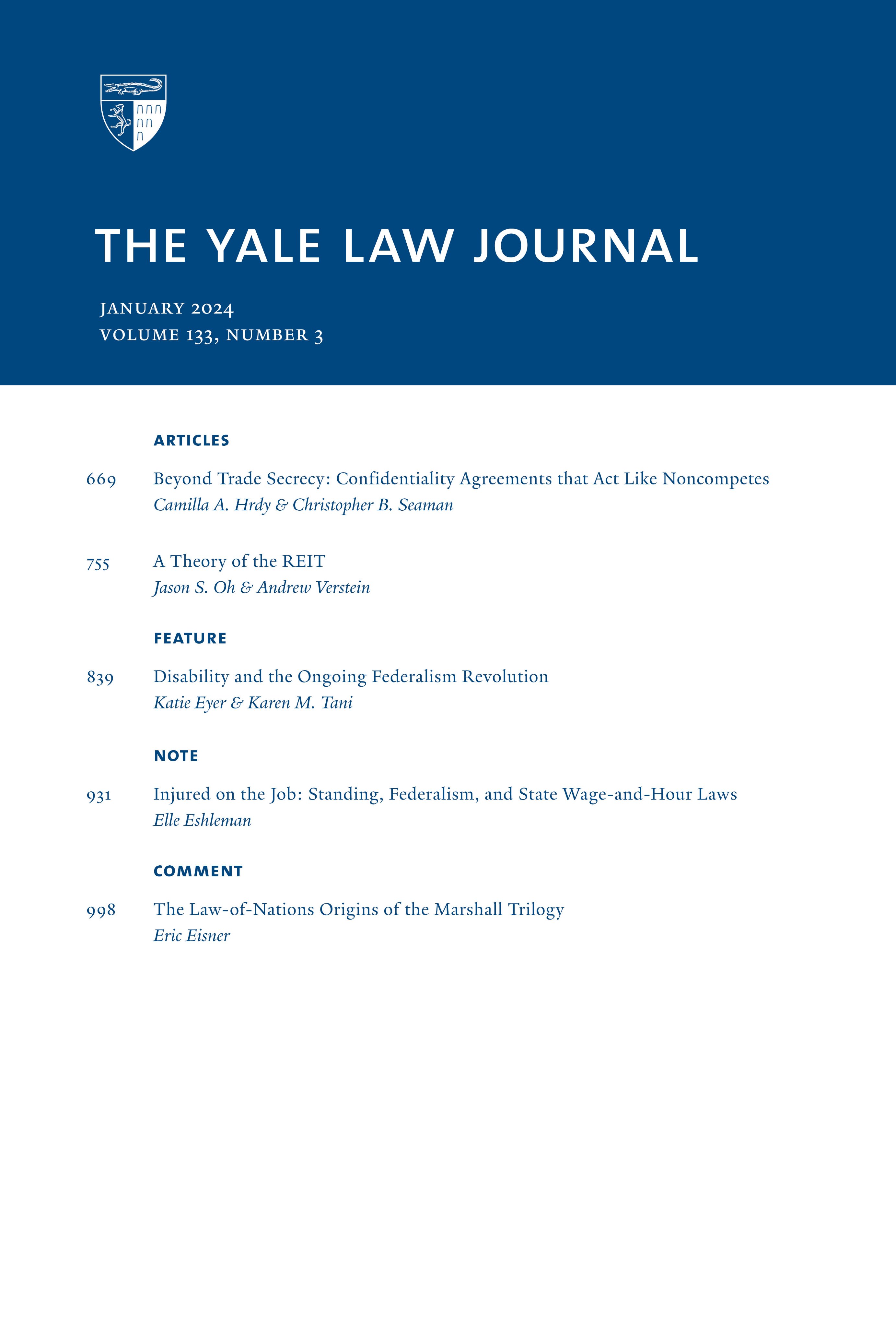Randomized Evaluation in Legal Assistance: What Difference Does Representation (Offer and Actual Use) Make?
IF 5.2
1区 社会学
Q1 LAW
引用次数: 74
Abstract
We report the results of the first of a series of randomized evaluations of legal assistance programs. This series of evaluations is designed to measure the effect of both an offer of and the actual use of representation, although it was not possible in the first study we report here to measure constructively all effects of actual use. The results of this first evaluation are unexpected, and we caution against both over-generalization and under-generalization. Specifically, the offers of representation came from a law school clinic, which provided high-quality and well-respected assistance in administrative “appeals” to state ALJs of initial rulings regarding eligibility for unemployment benefits (these “appeals” were actually de novo mini-trials). Our randomized evaluation found that the offers of representation from the clinic had no statistically significant effect on the probability that an unemployment claimant would prevail in the “appeal,” but that the offers did delay proceedings by (on average) about two weeks. Actual use of representation (from any source) also delayed the proceeding; we could come to no firm conclusions regarding the effect of actual use of representation (from any source) on the probability that claimants would prevail. Keeping in mind the high-quality and well-respected nature of the representation the law school clinic offered and provided, we explore three possible explanations for our results, each of which has implications for delivery of legal services. We conduct a review of previous quantitative research attempting to measure representation effects. We find that excepting the results of two randomized studies separated by more than thirty years, this literature provides virtually no credible quantitative information on the effect of an offer of or actual use of legal representation. We discuss disadvantages, advantages, and future prospects of randomized studies in the provision of legal assistance.法律援助的随机评价:代理(提供与实际使用)有何不同?
我们报告了一系列法律援助项目随机评估的第一项结果。这一系列的评估是为了测量提供和实际使用代表的效果而设计的,尽管我们在这里报告的第一项研究不可能建设性地测量实际使用的所有效果。第一次评估的结果是出乎意料的,我们警告不要过度泛化和泛化不足。具体来说,一个法学院诊所提供代理服务,该诊所在向州司法法官提出关于失业救济金资格的初步裁决的行政“上诉”方面提供高质量和受人尊敬的协助(这些“上诉”实际上是从头开始的小型审判)。我们的随机评估发现,诊所提供的代理服务在统计上对失业索赔人在“上诉”中获胜的可能性没有显著影响,但这些服务确实(平均)延迟了大约两周的诉讼程序。实际使用代表(来自任何来源)也延迟了程序;对于(任何来源的)实际使用申诉对索赔人胜诉的可能性的影响,我们无法得出确切的结论。牢记法学院诊所提供和提供的高质量和受人尊敬的代理性质,我们探索了三种可能的结果解释,每一种解释都对法律服务的提供有影响。我们对以往试图测量表征效应的定量研究进行了回顾。我们发现,除了相隔30多年的两项随机研究的结果外,这些文献几乎没有提供关于提供法律代理或实际使用法律代理的效果的可靠定量信息。我们讨论了提供法律援助的随机研究的缺点、优点和未来前景。
本文章由计算机程序翻译,如有差异,请以英文原文为准。
求助全文
约1分钟内获得全文
求助全文
来源期刊

Yale Law Journal
LAW-
CiteScore
4.50
自引率
6.20%
发文量
0
期刊介绍:
The Yale Law Journal Online is the online companion to The Yale Law Journal. It replaces The Pocket Part, which was the first such companion to be published by a leading law review. YLJ Online will continue The Pocket Part"s mission of augmenting the scholarship printed in The Yale Law Journal by providing original Essays, legal commentaries, responses to articles printed in the Journal, podcast and iTunes University recordings of various pieces, and other works by both established and emerging academics and practitioners.
 求助内容:
求助内容: 应助结果提醒方式:
应助结果提醒方式:


